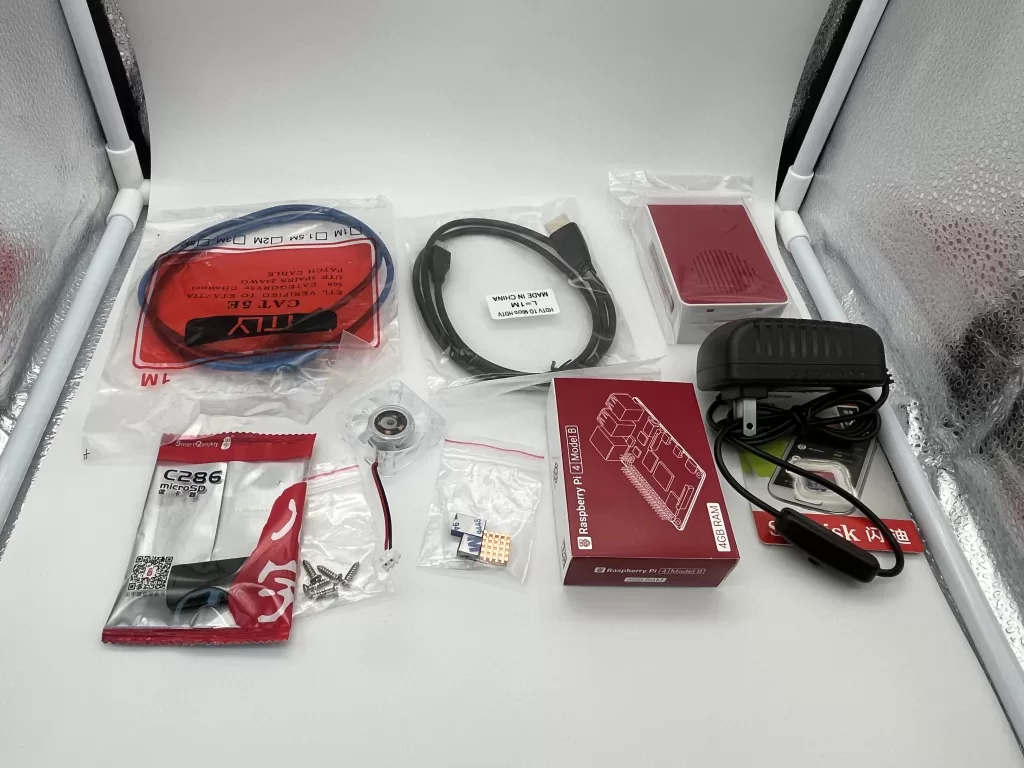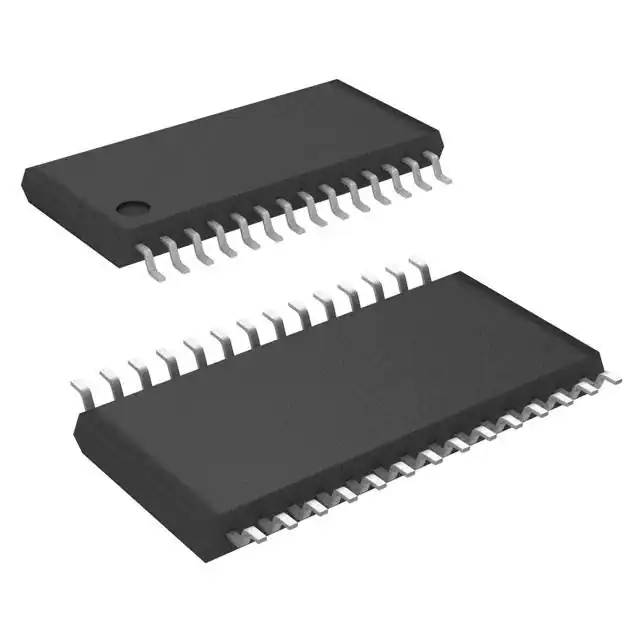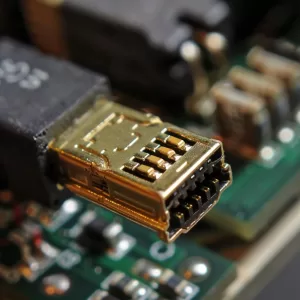Follow ampheo’s social media account and draw a chance to get a free Raspberry Pi. There are a variety of Raspberry Pis to choose from.
View detailsThermometer Fundamentals: Unraveling the Mechanisms
Temperature is a basic concept woven into the fabric of our lives, from the high fever of a sick child to the searing heat of a summer day. However, how can we measure this illusive feeling? Let us introduce the common thermometer – an instrument that may seem basic, but has a fascinating backstory and sophisticated internal mechanisms.
In this blog, we will embark on a journey to unveil the secrets of thermometers, demystifying their mechanisms, exploring their diverse applications, and answering all your burning questions about these ubiquitous instruments. So, buckle up and get ready to have your temperature taken, metaphorically speaking, of course!
What is a Thermometer?
A thermometer is a tool for taking temperature readings. Usually, it is made up of a small, sealed glass tube with a temperature scale marked on it. The most popular kind of thermometer is the mercury-in-glass thermometer, which measures temperature by measuring the expansion of mercury with temperature. On the other hand, electronic sensor-based digital thermometers are also often employed nowadays. Applications for thermometers include industrial processes, medicinal settings, and weather monitoring.

When Thermometer was invented?
The early 17th century saw the invention of the thermometer. Galileo Galilei, an Italian physicist, invented the first sealed thermometer in the early 1600s. However, Daniel Gabriel Fahrenheit, a Dutch scientist, created the modern thermometer as we know it today—one that has a standardized temperature scale—early in the 18th century. The science of measuring temperature was later advanced by the Swedish astronomer Anders Celsius's Celsius scale and the British scientist William Thomson's (Lord Kelvin's) Kelvin scale.
Why are Thermometers Important?
Health and well-being:
- Early detection of illness: Using a thermometer to take your body temperature can help you spot fevers, which are a common early sign of many infections and illnesses. Prompt intervention can avert complications and promote a quicker recovery.
- Food safety: Bacterial growth-related foodborne illnesses can be avoided by maintaining acceptable food temperatures during preparation, storage, and transportation. It is essential to use thermometers to keep an eye on these vital temperatures.
- Environmental monitoring: By keeping an eye on both indoor and outdoor temperatures, heating and cooling systems may be adjusted to provide hygienic and comfortable living and working spaces.
Science and research:
- Accurate measurements: By using thermometers to detect temperature changes precisely in experiments and observations, scientists have made ground-breaking discoveries in a variety of domains, including biology, chemistry, physics, and climate research.
- Standardization and reproducibility: For scientific advancement, temperature readings from many labs and experiments must be consistent. The validity and reliability of research data are guaranteed by standardized scales and thermometer calibration.
- Technological advancements: In order to develop new technologies, including electronics, materials science, renewable energy, and space exploration, it is essential to comprehend and regulate temperature.
Everyday life:
- Personal comfort: To ensure the best possible comfort and energy efficiency, we use thermometers to control the temperature in our cars and homes.
- Cooking and baking: From grilling meat to baking cakes, precise temperature management is essential to getting the best results.
- Gardening: Keeping an eye on soil and air temperatures enables gardeners to select the best plants, guarantee healthy growth, and prevent damage from frost.
Video related to Thermometers
How Does Thermometer Work?
Depending on the kind, thermometers operate differently, but they all operate on the same fundamental tenet: they use a material that undergoes some sort of change in response to temperature. This could be a shift in the material's electrical resistance, size, or even the color it releases.
Here's a breakdown of how two common types of thermometers work:
- Liquid-in-glass thermometers:
- Alcohol or mercury, or any other liquid, is contained in the thermometer's bulb at the base.
- The liquid expands as temperature rises.
- In the thermometer, the expanding liquid rises up a thin tube.
- The temperature can be read thanks to the scale markings on the tube.
- Digital thermometers:
- These make use of a temperature-sensitive substance for its sensor, whose electrical resistance varies.
- The resistance of the sensor increases with temperature.
- The thermometer's electronic circuit measures the resistance and interprets the result as a temperature reading.
- The digital panel shows the temperature reading.
Where Thermometers is used?
While fever measurement might be the first thing that comes to mind, thermometers have far-reaching applications beyond the doctor's office. They play a crucial role in various fields, including:
- Weather forecasting: In order to accurately record air and water temperatures, meteorological stations depend on thermometers. This information is essential for predicting the weather and tracking global warming.
- Food safety: It is essential to cook food at the right temperature in order to avoid contracting a foodborne illness. Kitchens, dining establishments, and facilities that process food all need thermometers.
- Industrial processes: Temperature control is crucial in a variety of industries, from chemical reactions to industrial machinery. In industries, power plants, and research facilities, thermometers are used to track and control temperature.
- Scientific research: Thermometers are essential instruments for scientists working in a variety of fields, from deciphering the heat produced by stars to investigating the Earth's core.
How Often should a Thermometer be Calibrated?
Just like any measuring instrument, thermometers need regular calibration to ensure they are providing accurate readings. The frequency of calibration depends on the type of thermometer, its intended use, and the required level of accuracy.
- Liquid-in-glass thermometers: Unless they sustain severe stress or damage, they usually only need to be calibrated once every few years.
- Digital thermometers: Depending on their quality and use, these may require calibration more frequently. For precise calibration interval information, refer to the manufacturer's instructions.
- Infrared thermometers: These thermometers require frequent calibration, usually every six months to a year, because of their sensitivity and possibility for misalignment.
How to Check Temperature without Thermometer?
While thermometers are invaluable tools, sometimes you might find yourself without one. But fear not! There are still ways to gauge temperature approximately using everyday items:
- Touch: The simplest approach, yet it might be erroneous and subjective. You can get a general impression of something's warmth or coldness via the touch, but keep in mind that your perception may be influenced by your own body temperature.
- Observing materials: Observe how various materials respond to temperature variations. For instance, liquids like water expand in volume as they heat up, and metals get warmer to the touch than wood.
- Evaporation rate: In warmer climates, a damp cloth or tissue dries more quickly. Particularly when used outside, this might provide as a rough measure of changes in relative temperature.
- Plant and insect behavior: In response to heat stress, some plants wilt or change color, while certain insects become more active. These could be subtle indicators of how warm the place is.
Future of Thermometers
As technology advances, the future of thermometers is brimming with possibilities. We can expect to see:
- Miniaturization and Integration: Picture minuscule, inconspicuous temperature sensors incorporated into your furnishings, clothing, or even the walls. These could offer individualized thermal comfort and continuously monitor your environment. Consider a chair that changes its temperature in response to your body temperature or athletic wear that wicks perspiration away automatically. This integration has the potential to completely change how we perceive temperature in our homes and offices.
- Smart Thermometers: A plethora of information and control may be available from thermometers that are linked to your smartphone or smart home network. Imagine being able to remotely control the temperature in your home before you arrive, or getting notifications in real-time if your baby's room gets too cold. By recognizing your preferences, these smart thermometers can automatically produce the ideal temperature settings, saving you money and improving your comfort.
- Biosensors: These tiny, wirelessly transmitting sensors that can be implanted or even swallowed pills could completely change the medical field. Imagine physicians use real-time body temperature data to adjust medicine dosages, identify infections early, or even remotely monitor patients' temperatures. Once unthinkable preventative healthcare and tailored medication could result from this degree of bio-integration.
Conclusion
The thermometer has transformed our understanding of temperature from its simple origins to its sophisticated contemporary forms. It has influenced our daily lives, guaranteed our safety and health, and contributed significantly to scientific breakthroughs. The future of thermometers offers even more accuracy, adaptability, and integration into our constantly linked environment as technology advances.
FAQs about Thermometer
Why is my thermometer not working?
- Liquid-in-glass: Inspect for any fractures in the glass tube or separation of the liquid. Make sure it is properly positioned and shielded from harsh sunlight or heat.
- Digital: Check for any loose connections, clean the sensor, and replace the battery. Refer to the owner's handbook or the manufacturer if the issue continues.
- Infrared: Ensure that the sensor is clear of debris and clean. Make sure the target object is in the correct range and that you are targeting it correctly.
Can thermometers go bad?
Yes, over time, thermometers can lose their accuracy due to various factors like aging, shock, or exposure to extreme temperatures. Regular calibration helps prevent this.
Are thermometers accurate?
A thermometer's accuracy is contingent upon various aspects, such as its kind, caliber, and calibration. While liquid-in-glass thermometers may have somewhat larger error margins, digital and infrared thermometers are typically very accurate.
How to set up an AcuRite indoor/outdoor thermometer?
The outdoor sensor on the majority of AcuRite models needs to be placed in a shady area away from heat sources and direct sunlight. Inside your house, the interior sensor can be positioned in the middle. Follow the manufacturer's instructions for pairing the sensors and setting preferences.
Where thermometer can be placed?
The type of thermometer and your planned use will determine placement. Keep it away from drafts and direct heat sources for optimal air temperature. Make sure you have appropriate touch with the affected area for body temperature. The sensor should be submerged at the appropriate depth for measuring food or liquids.
Ella
Ella is a skilled embedded systems engineer with experience in PCB design and microcontroller programming. She is committed to following the most recent developments in the field and is constantly seeking for ways to apply them to her work.
WEW ALL POSTS BYElla-
Follow Ampheo official Facebook and win a Free Raspberry Pi 4 193
-
Demystifying Variable Resistors: Types, Applications and Rheostats vs Potentiometers 608
In electronic circuits, variable resistors—also referred to as potentiometers and rheostats—are crucial parts. They make it possible to modify resi...
View details -
Unveiling A/C Compressor Connectors: A Comprehensive Guide 279
Connectors for air conditioning compressors are essential to the operation of air conditioning systems. Maintaining optimal performance requires kn...
View details -
A/V Cables: The Bridge Between Audio and Video Devices 305
In this blog, we will delve into the world of A/V cables, exploring their types, uses, and relevance in the modern era.
View details -
Unveiling A/C Transformer: Everything You Need to Know 387
A/C transformers are necessary parts of a lot of electrical and electronic equipment. They change the voltage level of alternating current (AC) to ...
View details -
Understanding RJ45 Connectors: Applications and Installation Tips 132
In this blog, we will delve into the world of RJ45 connectors, exploring their history, functions, applications, installation tips, and potential d...
View details
 Ampheo Electronics
Ampheo Electronics






